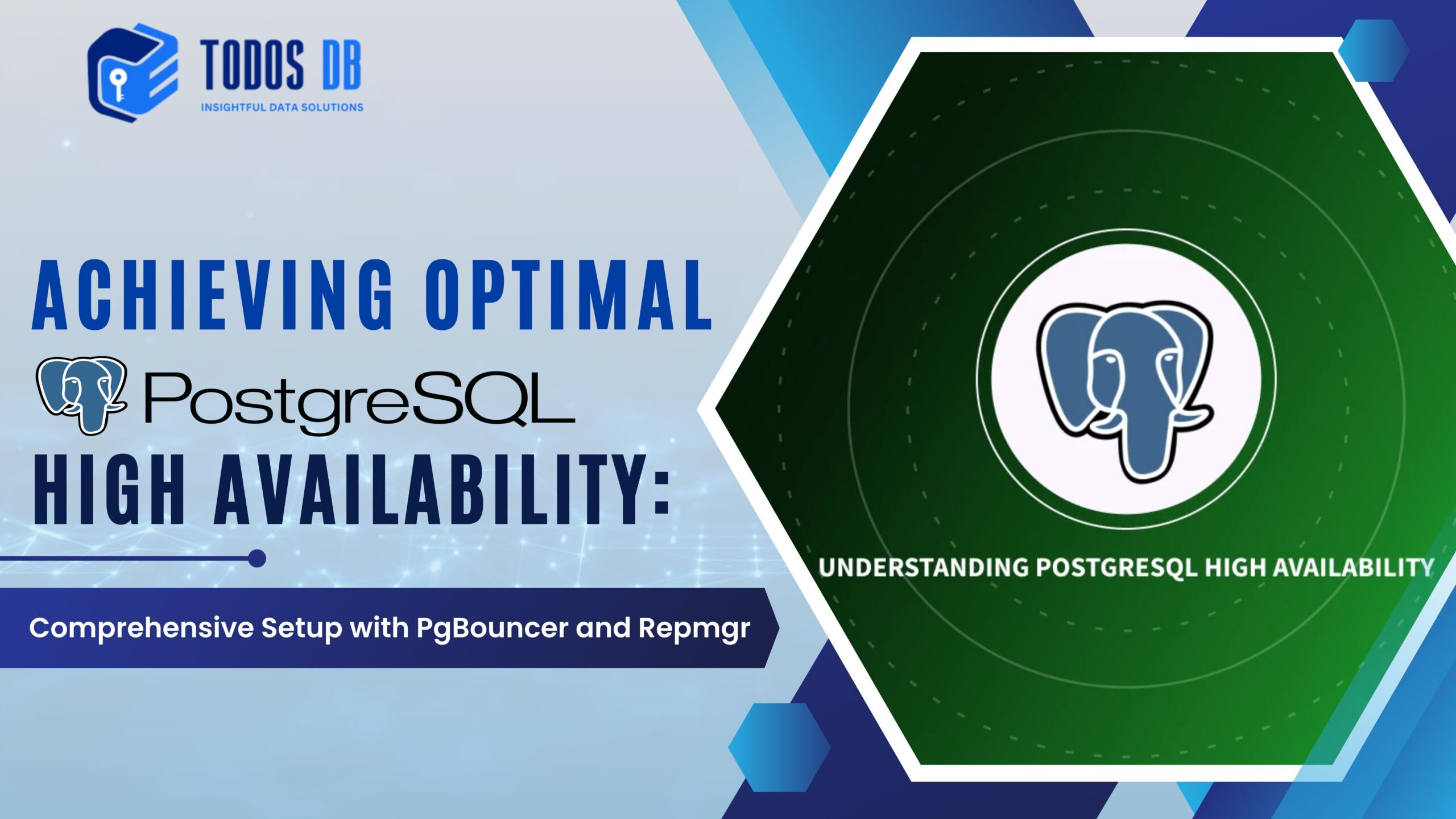PostgreSQL is renowned for its advanced indexing capabilities that go beyond traditional B-tree indexes, especially when dealing with complex queries and large datasets. Among its powerful indexing methods, Generalized Inverted Index (GIN) and Generalized Search Tree (GiST) stand out. These indexing structures are designed to optimize the performance of diverse data types, including full-text search, arrays, JSONB, and geometric data. This article provides an in-depth exploration of GIN and GiST, examining their internal structures, performance characteristics, use cases, and how to choose between them.
1. Generalized Search Tree (GiST): A Framework for Custom Indexing
GiST is not a single indexing strategy; instead, it serves as a versatile framework that allows developers to create custom indexing mechanisms tailored for complex data types. GiST operates on the principle of organizing data in a balanced tree structure, akin to B-trees, but with a more flexible approach to indexing.
1.1 How GiST Works: Internal Structure and Mechanics
GiST structures its data in a hierarchical, balanced tree, which can be understood through its key components:
- Internal Nodes: Each internal node in a GiST index represents a bounding region or generalization of the data in its child nodes. These nodes are used to minimize the search space during query execution. They help in pruning irrelevant branches, thus speeding up search operations.
- Leaf Nodes: The leaf nodes contain pointers to the actual data entries (or the data itself). Each entry in a leaf node matches the query based on user-defined rules rather than fixed comparisons.
- Bounding Regions: Internal nodes can encompass various geometric shapes or abstract data structures, allowing GiST to support custom comparison functions defined by the user. This is particularly beneficial for spatial data where bounding boxes or polygons can be used to efficiently encapsulate data.
For instance, in a spatial indexing scenario, a GiST index might contain a hierarchy of bounding boxes that represent spatial regions. When querying for a point, PostgreSQL can traverse the tree, evaluating only relevant regions, which reduces the number of nodes that need to be examined.

1.2 Custom Operators and Functions in GiST
One of the most powerful features of GiST is its support for user-defined operator classes. This flexibility allows developers to define how data is compared and queried:
- Consistent Function: Determines whether a specific search condition matches a given index entry. It is essential for maintaining the integrity of the index.
- Union Function: Combines multiple index entries into a single bounding region, which is particularly useful for merging results from child nodes.
- Compress Function: Reduces the size of the indexed data by using a compressed representation. This can significantly improve the storage efficiency of the index.
- Penalty Function: Evaluates the cost of adding an item to an internal node, which helps in maintaining the balance of the tree during insertions.
These customizable functions make GiST suitable for a wide variety of applications, including but not limited to:
- Geospatial Indexing: GiST is a core component of PostgreSQL’s PostGIS extension, enabling efficient queries for geographic objects. It allows for rapid processing of queries like “find all points within a radius” or “retrieve polygons that intersect with a specified area.”
- Range Queries: GiST is effective for indexing numeric or date ranges, allowing for efficient retrieval of records based on overlapping conditions.
- Full-Text Search: While GIN is often preferred for full-text indexing, GiST can also index text by leveraging specific operator classes, enabling proximity-based text search and relevance ranking.

1.3 Performance Characteristics of GiST
Understanding the performance implications of GiST indexing is critical for optimizing database operations:
- Index Build Time: Building GiST indexes can be slower than constructing traditional B-tree indexes due to the need for complex calculations to determine bounding regions and maintain tree balance. The time taken to build an index can vary based on the complexity of the data types and the specific custom functions defined.
- Search Performance: GiST excels in queries involving complex data types, as it reduces the number of examined nodes during search operations. However, its performance may degrade in scenarios where many bounding regions overlap, leading to more comparisons and higher IO costs.
- Maintenance Overhead: As with any indexing structure, GiST indexes can become unbalanced over time, particularly under heavy write workloads. Regular maintenance using PostgreSQL’s VACUUM and REINDEX commands can help optimize performance but may be resource-intensive.

Example: Creating a GiST Index
Here’s how you can create a GiST index for a geometric data type:
CREATE EXTENSION IF NOT EXISTS postgis;
CREATE TABLE locations (
id SERIAL PRIMARY KEY,
name VARCHAR(100),
geom GEOMETRY(Point, 4326)
);
-- Insert sample data
INSERT INTO locations (name, geom)
VALUES
('Location A', ST_SetSRID(ST_MakePoint(-71.0603, 42.3578), 4326)),
('Location B', ST_SetSRID(ST_MakePoint(-71.0594, 42.3581), 4326));
-- Create GiST index on the geom column
CREATE INDEX locations_geom_idx ON locations USING GIST (geom);In this example, we create a table called locations that stores geographic points. We then create a GiST index on the geom column to optimize spatial queries.
2. Generalized Inverted Index (GIN): Optimized for Multi-Valued Data
GIN is designed specifically for efficient querying of multi-valued data structures, such as arrays, full-text documents, and JSONB fields. Unlike GiST, which offers a more general-purpose indexing framework, GIN is tailored to handle scenarios where individual elements within a row need to be indexed and queried independently.

2.1 How GIN Works: Internal Structure and Mechanics
GIN employs an inverted index model, which indexes individual elements within multi-valued columns and maps them back to their respective rows. This structure is particularly effective for datasets where a single row may contain numerous values, allowing for rapid retrieval based on those values.
In detail, GIN organizes its data as follows:
- Key-Value Pairs: Each unique element in a multi-valued column (e.g., a word in a document or an item in an array) serves as a key in the index. Each key maps to a list of row pointers that contain that key.
- Posting Lists: For each key, GIN maintains a posting list, which is an array of row identifiers (TIDs). This allows GIN to efficiently respond to queries that require the identification of rows containing specific keys.
- Partial Matching: GIN is designed to support partial matches, making it well-suited for operations like substring searches in full-text search scenarios. This capability allows GIN to optimize queries looking for terms with shared prefixes or suffixes.
2.2 Fast Query Execution in GIN
The GIN indexing structure is optimized for fast query execution, particularly when handling set-based operations. Here’s how GIN enhances performance:
- Set-Based Query Performance: GIN excels in scenarios where queries involve searching for multiple values. For instance, if a query requests all rows where an array contains any of a specified set of values, GIN can quickly identify the relevant row pointers through efficient key lookups and posting list aggregations.
- Full-Text Search Efficiency: In full-text search applications, GIN can rapidly locate documents containing specific terms by leveraging its inverted index structure. GIN’s ability to handle large datasets of text and return relevant documents based on keyword searches significantly enhances search performance.
- Combining Results: When querying multiple keys, GIN can effectively compute the intersection of posting lists, allowing for efficient retrieval of rows that satisfy multiple criteria simultaneously.

2.3 Use Cases for GIN
GIN’s unique structure makes it highly effective for several specific use cases:
- Full-Text Search: PostgreSQL’s tsvector utilizes GIN indexes to efficiently manage and search through large documents. GIN’s inverted index allows for fast retrieval of documents based on keyword searches, significantly improving response times in text-heavy applications.
- Array and JSONB Querying: In scenarios where rows contain arrays or JSONB data, GIN indexes each individual element or key. This enables rapid querying of nested structures, allowing applications to perform searches on deeply nested JSON data or arrays without incurring heavy performance costs.
- Document Search Systems: Applications designed for searching through extensive datasets of semi-structured documents benefit greatly from GIN indexes. They can quickly identify documents based on specific fields or keywords, streamlining the search process for end-users.
2.4 Performance Characteristics of GIN

Evaluating GIN’s performance is critical for understanding its suitability in various contexts:
- Index Build Time: GIN indexes tend to have a longer build time compared to traditional B-trees because they require the creation of an index entry for each unique element within a multi-valued column. This can lead to significant overhead in write-heavy scenarios.
- Query Performance: GIN excels in read performance, particularly for queries that require searching for multiple terms or values. The ability to quickly locate and retrieve relevant rows makes GIN a strong choice for applications with heavy read workloads.
- Update Costs: While GIN offers outstanding query performance, it incurs a high maintenance cost during insertions and updates. When a new row is inserted, GIN must update the index for each element in that row, which can negatively impact write performance. PostgreSQL provides an option for fastupdate, where new entries are temporarily stored in a buffer, improving insert performance at the cost of slightly delayed read performance until the index is fully updated.
Example: Creating a GIN Index
Here’s how you can create a GIN index for an array column:
CREATE TABLE documents (
id SERIAL PRIMARY KEY,
title VARCHAR(100),
tags TEXT[]
);
-- Insert sample data
INSERT INTO documents (title, tags)
VALUES
('Document 1', ARRAY['postgresql', 'database', 'gin']),
('Document 2', ARRAY['postgresql', 'sql']),
('Document 3', ARRAY['database', 'gin', 'index']);
-- Create GIN index on the tags column
CREATE INDEX documents_tags_idx ON documents USING GIN (tags);In this example, we create a table called documents with an array column for tags. We then create a GIN index on the tags column to optimize searches for documents containing specific tags.
2.4 Querying with GIN Index
You can efficiently query the documents table for rows that contain a specific tag:
-- Find documents that contain the tag 'gin'
SELECT * FROM documents WHERE tags @> ARRAY['gin'];The @> operator checks for containment, allowing for efficient retrieval of documents with the specified tag.
3. Comparison of GIN and GiST: Selecting the Right Index:
Choosing between GIN and GiST involves evaluating the specific types of data you are working with and the queries you intend to execute. Here is a comparative summary of their characteristics:
| Feature | GIN | GiST |
| Primary Use Cases | Arrays, JSONB, Full-Text Search | Geospatial data, Range queries |
| Index Structure | Inverted index, key-value pairs | Balanced tree with bounding regions |
| Query Speed | Fast for multi-value and keyword searches | Optimized for spatial and range queries |
| Index Build Time | Generally slower due to per-element indexing | Moderate, complexity depends on data |
| Index Size | Can grow large, especially with many unique keys | Typically more compact, depends on data |
| Maintenance Overhead | High during insert/update operations | Moderate, may require VACUUM or REINDEX |
4. Hybrid Indexing Strategies: Combining GIN and GiST
In some cases, you may want to leverage both GIN and GiST to optimize query performance across different data types and query patterns. PostgreSQL supports composite indexes, which allow you to create multiple index types on different columns within the same table.
For instance, in a geospatial application, you might employ a GiST index to handle spatial queries while using a GIN index for text-based metadata. This hybrid approach allows the database to handle diverse workloads efficiently, providing optimized performance for both spatial and textual queries.
Example Scenario: Consider a real estate application where properties have geographical locations (latitude and longitude) and associated descriptions stored as text. By using a GiST index for the geographical location and a GIN index for the textual description, the application can efficiently respond to user queries that filter properties based on location while also searching for specific keywords in descriptions.

4.1 Example: Composite Index Creation
CREATE TABLE properties (
id SERIAL PRIMARY KEY,
name VARCHAR(100),
geom GEOMETRY(Point, 4326),
description TEXT
);
-- Insert sample data
INSERT INTO properties (name, geom, description)
VALUES
('Property A', ST_SetSRID(ST_MakePoint(-71.0603, 42.3578), 4326), 'Beautiful house near the park'),
('Property B', ST_SetSRID(ST_MakePoint(-71.0594, 42.3581), 4326), 'Cozy apartment with great views');
-- Create GiST index for geom and GIN index for description
CREATE INDEX properties_geom_idx ON properties USING GIST (geom);
CREATE INDEX properties_desc_idx ON properties USING GIN (description gin_trgm_ops);In this example, we create a properties table with both a GiST index on the geometric data and a GIN index on the text description. The gin_trgm_ops operator class enables trigram indexing for efficient substring searches.
4.2 Querying with Composite Indexes
To perform queries that utilize both indexes, you can execute:
-- Find properties near a location and containing a specific keyword
SELECT *
FROM properties
WHERE geom && ST_MakeEnvelope(-71.061, 42.356, -71.059, 42.359, 4326)
AND description ILIKE '%house%';The && operator is used for bounding box queries with GiST, while ILIKE enables case-insensitive pattern matching with GIN.
5. Best Practices for Indexing with GIN and GiST
To maximize the benefits of GIN and GiST indexes in PostgreSQL, consider the following best practices:
- Choose the Right Index for the Right Data: Analyze your data types and query patterns to determine whether GIN or GiST is more appropriate. Use GIN for multi-valued fields and GIN for spatial data or complex custom types.
- Utilize Partial Indexing: If only a subset of your data will be queried frequently, consider creating partial indexes. This can significantly reduce index size and improve performance by focusing only on the relevant subset of data.
- Regular Maintenance: Periodically perform maintenance operations like VACUUM and REINDEX to ensure that your indexes remain efficient over time. This is particularly important for GiST indexes that may become unbalanced during heavy write operations.
- Monitor Performance: Use PostgreSQL’s built-in monitoring tools to analyze the performance of your indexes. Query execution plans can provide insights into whether your indexes are being used effectively or if adjustments are needed.
- Test and Benchmark: Before deploying indexes in a production environment, conduct thorough testing and benchmarking. This will help you understand the impact of your indexing strategy on both read and write performance.
6. Conclusion: Mastering PostgreSQL’s Advanced Indexes
PostgreSQL’s GIN and GiST indexes offer powerful tools for optimizing query performance when dealing with complex data types. GIN excels at managing multi-valued data structures, while GiST provides robust support for geospatial and range-based queries. By understanding the internal workings, performance trade-offs, and suitable use cases for each index type, developers can effectively harness these advanced indexing strategies to build efficient, high-performance applications.
As database applications continue to evolve, leveraging the capabilities of GIN and GiST will remain essential for achieving optimal performance in PostgreSQL environments, paving the way for scalable and responsive systems that meet the demands of modern data-driven applications.


